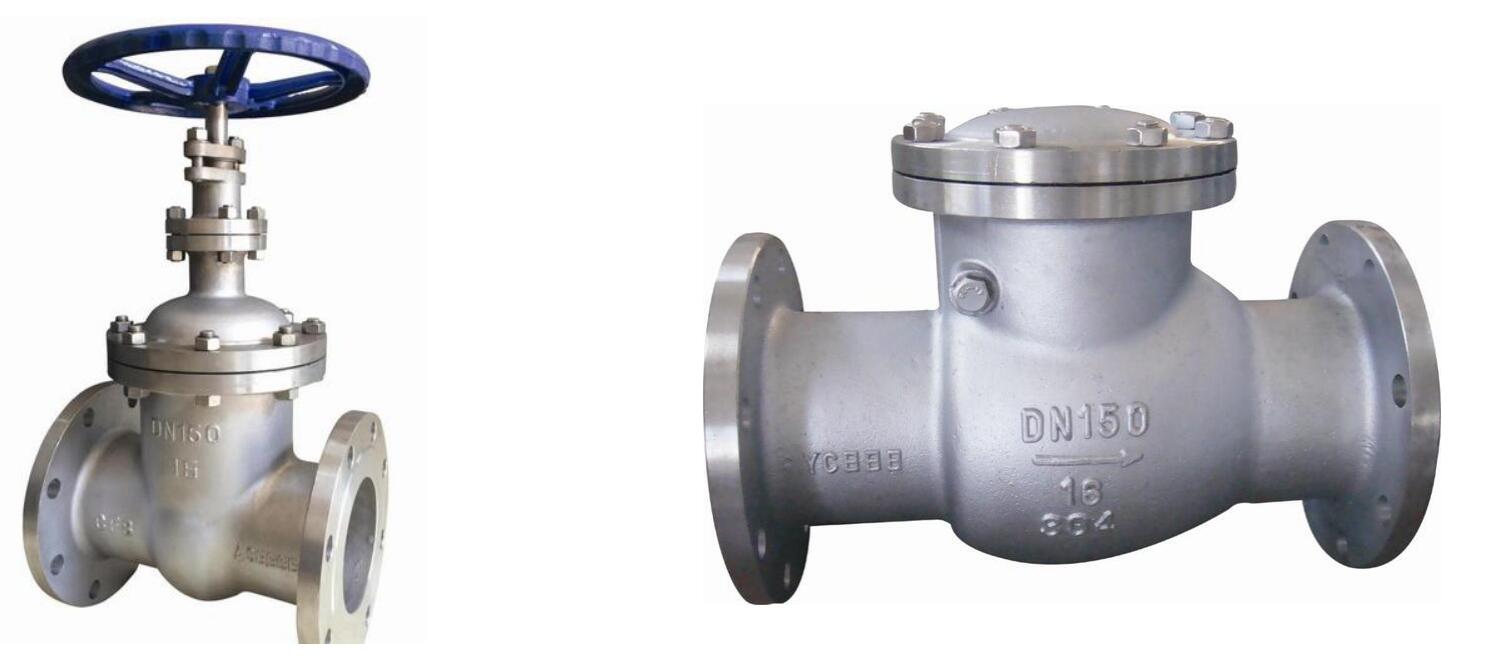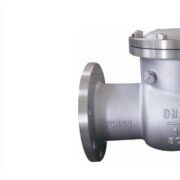Differences Between Gate And Check Valves
Gate valves and check valves are two distinct types of valves used across various industries for controlling fluid flow in piping systems. Each serves a different primary function and operates based on different principles.

Valvola a saracinesca
Design and Function: A gate valve features a movable gate or wedge that slides vertically to control the flow of fluid. It is operated manually, typically using a handwheel or an actuator for larger sizes. The primary function of a gate valve is to start or stop the flow, providing a clear and unobstructed path when fully open, and a tight seal when fully closed.
Applicazioni: Gate valves are widely used in applications where a full, unrestricted flow of fluid is necessary. They are ideal for on/off control but are not suitable for throttling purposes, as partial opening can cause vibration and damage to the gate and seats. Common uses include water supply, oil and gas pipelines, and other systems where flow needs to be completely shut off or allowed freely.
Vantaggi:
- Minimal pressure drop when fully open.
- Suitable for both liquid and gas applications.
- Provides a tight seal when closed.
Disadvantages:
- Slow to open and close.
- Not suitable for throttling.
- Prone to wear and corrosion, which can affect sealing over time.
Valvola di ritegno
Design and Function: A check valve, also known as a non-return valve, allows fluid to flow in one direction and automatically prevents backflow when the fluid in the line reverses direction. It operates based on the flow pressure and does not require manual operation. The internal mechanism varies by design, including ball, swing, and lift check valves.
Applicazioni: Check valves are essential in preventing backflow, protecting equipment, and ensuring the safety of the system. They are used in a wide variety of applications, including water and wastewater treatment, chemical processing, and residential plumbing systems. Any system where backflow could cause problems or where fluid needs to be maintained in a single direction benefits from the use of a check valve.
Vantaggi:
- Prevents backflow automatically.
- Can be used in a wide range of pressures and temperatures.
- Available in various designs to suit specific flow characteristics.
Disadvantages:
- Cannot be used to regulate or stop flow.
- Some designs may cause a significant pressure drop.
- Requires careful selection and installation to function correctly.
Key Differences Between Gate And Check Valves
- Primary Function: Gate valves are used to start or stop the flow, while check valves are designed to prevent backflow and allow flow in only one direction.
- Operation: Gate valves require manual or actuator operation to open or close, whereas check valves operate automatically based on flow conditions.
- Application Use: Gate valves are chosen for system isolation or where full flow is necessary. Check valves are selected to prevent backflow and protect against reverse flow conditions.
Understanding these differences is crucial when designing or maintaining a piping system, ensuring that the right type of valve is used for its intended function, thereby optimizing system performance and safety.



